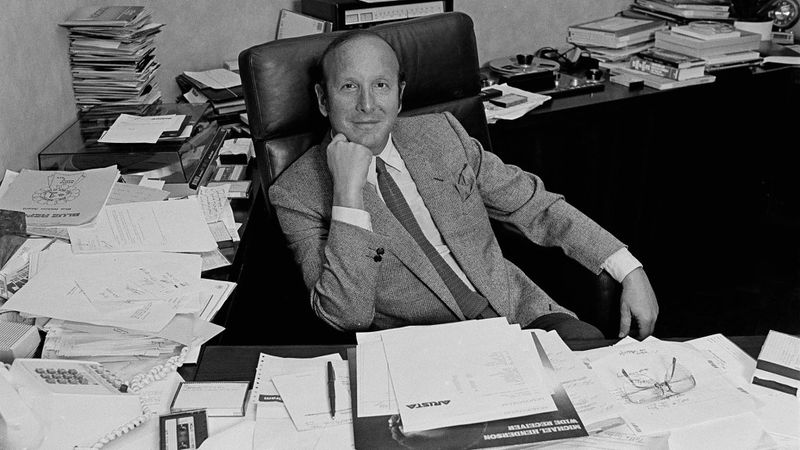From the 9-to-5 grind to the sacred two-week notice, America’s work culture is filled with traditions we rarely question. But dig a little deeper, and you’ll find many of them are based on myths, outdated beliefs, or straight-up corporate spin. Here are 17 job traditions that aren’t what they seem—and the truth might just set you free.
1. The 9-to-5 Workday Was Created for Work-Life Balance
The notion of the 9-to-5 workday as a protector of personal time is a misconception. Initially designed during the Industrial Age, the 8-hour workday was a compromise to prevent overwork and burnout. Far from being about wellness, it was a strategy aimed at maximizing productivity.
In contemporary settings, the rigid schedule often conflicts with the modern demand for flexibility. While some workers have managed to adapt it, others find it limiting. This work structure is a relic, not a beacon of work-life balance.
Understanding its origins reveals its true intent: efficiency over employee well-being.
2. You Must Give Two Weeks’ Notice
The widespread belief that a two-week notice is a legal necessity is unfounded. No law mandates this practice; rather, it’s a courtesy that companies have propagated. Ironically, many employers reserve the right to dismiss employees instantaneously, without any notice.
This tradition underscores an imbalance in employer-employee dynamics. Employees often feel obligated to adhere to this unwritten rule, fearing reputational damage.
It’s essential to recognize that while the gesture is appreciated, it isn’t legally binding. Employees should consider their circumstances before adhering to this convention, balancing personal and professional commitments.
3. Hard Work Guarantees Promotion
The romanticized belief that sheer hard work leads to promotion is misleading. Research indicates that networking, self-promotion, and fitting a leadership mold often outweigh diligence. This realization can be disheartening for those who equate merit with advancement.
The corporate ladder is intricate, influenced by subjective assessments and biases. Employees diligent in their roles may still find themselves overlooked.
Understanding the multifaceted nature of career growth is crucial for realistic expectations. Networking and visibility often play a greater role, reshaping one’s approach to professional development and recognition.
4. Salaried Jobs Are Better Than Hourly Ones
The perception that salaried positions equate to prestige and stability is a misconception. Salaried workers often find themselves trapped in a cycle of unpaid overtime, blurring the boundary between work and personal life.
Conversely, hourly employees may enjoy clearer work-life demarcations, with the potential to earn more per hour. The stability of a salaried job is not always synonymous with financial security.
Understanding these dynamics challenges the notion that salary always signifies a superior career path. Each has its pros and cons, and the best choice varies by individual priorities.
5. You Need to Stay at a Job for a Year or You’ll Look Unstable
The belief that job-hopping damages one’s résumé is outdated. In today’s dynamic job market, changing roles can enhance skills and increase income. Loyalty to one employer is no longer the gold standard it once was.
Employers recognize that diverse experiences bring valuable insights. The stigma surrounding short job tenures has diminished, reflecting an evolving work culture.
Acknowledging this shift allows professionals to pursue opportunities aligned with their goals. Job changes are now seen as strategic moves toward career growth and personal fulfillment, rather than signs of instability.
6. The Customer Is Always Right
The adage “The customer is always right” was coined to prevent refunds and placate difficult customers. However, it frequently results in the mistreatment of employees, especially in retail and service industries.
This mantra can create unrealistic expectations, leading to strained interactions and compromised service quality. Employees often bear the brunt of customer dissatisfaction.
Recognizing the phrase’s origins helps refocus on equitable treatment for both customers and staff. Balanced interactions foster a healthier work environment, prioritizing respect and realism over outdated cliches.
7. College Is the Only Path to a Good Job
The belief that a college degree is essential for success is increasingly questioned. Many lucrative careers in trades, technology, and entrepreneurship don’t require a degree, yet offer substantial growth.
These alternative paths are expanding, challenging the traditional college narrative. They highlight that education is more diverse and adaptable than once thought.
Recognizing the value of varied career paths empowers individuals to explore opportunities that align with their skills and interests, without the burden of college debt. The evolving workforce landscape supports diverse educational backgrounds.
8. Company Loyalty Is Rewarded
The notion that long-term company loyalty ensures rewards is a fallacy. Studies reveal that external hires often receive higher salaries and better benefits than internal promotions. Companies tend to value fresh talent more than tenure.
This reality can be disheartening for loyal employees who anticipate recognition for their dedication. It underscores a shift towards prioritizing new perspectives over long-standing commitment.
Understanding this trend encourages employees to negotiate better terms and explore new opportunities. Loyalty, while commendable, doesn’t always equate to financial or professional advancement.
9. Open Offices Boost Collaboration
The belief that open office layouts enhance collaboration is misleading. While visually appealing, these spaces often lead to distractions and decreased productivity. The initial intent was cost reduction rather than team cohesion.
Workers in open environments report higher stress levels and reduced concentration. The lack of privacy can hinder meaningful collaboration, contrary to the design’s purpose.
Recognizing the drawbacks of open offices prompts a reevaluation of workspaces. Creating environments that balance openness with privacy can foster genuine collaboration and improve overall well-being.
10. Managers Know Best
The assumption that managers inherently possess superior knowledge is flawed. Often, promotions are based on tenure or connections rather than leadership skills. Frontline workers frequently have deeper insights into day-to-day challenges.
This disconnect can lead to ineffective decision-making and workplace frustration. Employees may feel undervalued, knowing their expertise is overlooked.
Acknowledging the limitations of managerial wisdom encourages inclusive decision-making. Valuing employee input can enhance operational efficiency and morale, bridging the gap between management and staff experiences.
11. Working Overtime Proves Dedication
The glorification of overtime as a testament to dedication is a misconception. Chronic overtime can lead to burnout, decreasing productivity and impacting health. Yet, in many workplaces, it’s celebrated as a mark of commitment.
This culture pressures employees to prioritize work over well-being, often without additional compensation. It devalues efficient work practices in favor of sheer hours spent.
Recognizing the adverse effects of excessive overtime advocates for a healthier work-life balance. Sustainable practices benefit both employees and employers, highlighting quality over quantity.
12. Benefits Are a Gift, Not a Right
The perception that workplace benefits are generous gifts is misleading. Many benefits, like healthcare, were hard-won by workers advocating for fair compensation. They’re integral to employment, not mere bonuses.
This misconception can lead to complacency, undermining the value of negotiated benefits. Recognizing them as a right emphasizes their role in worker welfare.
Understanding this perspective empowers employees to advocate for comprehensive benefit packages. It reinforces the notion that benefits are earned, supporting a healthier employer-employee relationship rooted in mutual respect.
13. Dress Codes Boost Professionalism
The belief that dress codes enhance professionalism lacks supportive evidence. Research shows no significant link between attire and job performance. Dress codes often reinforce outdated power dynamics and societal norms.
This emphasis on appearance can overshadow skills and contributions, stifling individuality. It may perpetuate stereotypes and limit diversity in workplace expression.
Recognizing this disconnect encourages more inclusive policies. Allowing employees to choose attire that reflects their identity can foster a more authentic and comfortable work environment, aligned with modern values.
14. Your Job Defines You
The notion that one’s job defines their identity serves employers more than employees. This mindset ties personal worth to professional titles, leading to burnout and dissatisfaction.
People are multi-faceted, with value extending beyond occupational roles. Balancing work with personal passions and interests enriches life and wellbeing.
Embracing a broader identity perspective empowers individuals to pursue fulfillment outside of work. It redefines success, prioritizing holistic growth and happiness over job titles. This shift fosters resilience and a more balanced approach to life’s demands.
15. Work Is a Meritocracy
The idea that work operates as a true meritocracy is overly simplistic. Bias, politics, and systemic inequality significantly influence career trajectories, beyond individual talent or effort.
This realization highlights the complexities of workplace dynamics, where merit is not the sole determinant of success. Navigating these challenges requires strategic awareness and adaptability.
Understanding the realities of workplace structures encourages advocacy for fairness and inclusivity. It emphasizes the need for systemic change to create equitable opportunities for all employees, regardless of background.
16. Quiet Quitting Is a New Problem
The term “quiet quitting” suggests a novel phenomenon, yet doing the bare minimum when undervalued has long existed. The phrase’s popularity highlights changing worker expectations and reactions to unfulfilling jobs.
This behavior reflects dissatisfaction and a desire for better conditions, not laziness. It symbolizes a shift toward valuing personal well-being over excessive work demands.
Acknowledging this trend encourages dialogues about work satisfaction and engagement. It promotes environments where employees feel valued and motivated, focusing on meaningful contributions rather than mere attendance.
17. Retirement at 65 Is a Guarantee
The expectation of retiring at 65 with security is increasingly unrealistic. Diminished pensions, rising living costs, and unstable social systems compel many to work beyond this age.
This shift challenges the traditional retirement narrative, raising concerns about financial preparedness. Workers must navigate an evolving landscape where retirement is not a given but a goal.
Understanding these trends encourages proactive financial planning. It fosters awareness of the need for adaptable retirement strategies, reflecting the changing economic environment and ensuring dignity in later life stages.

















